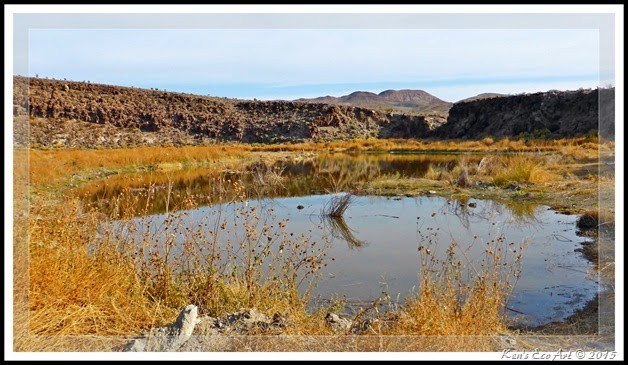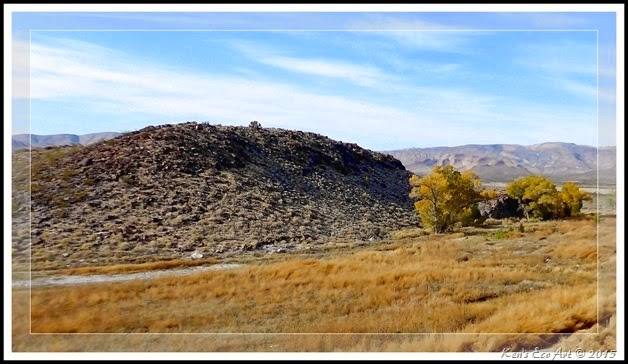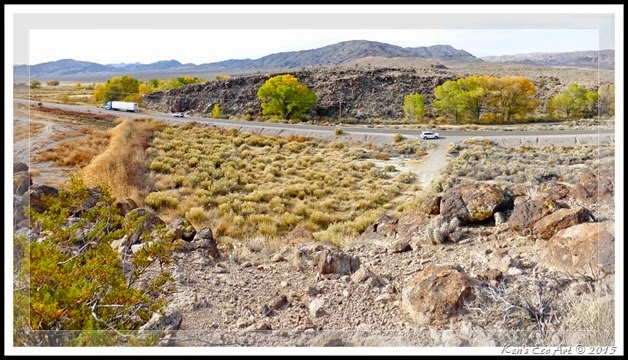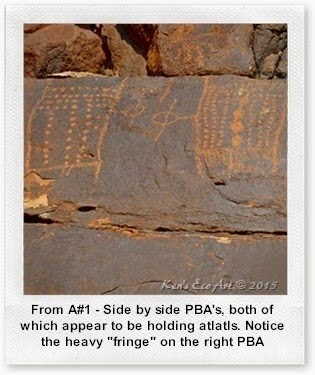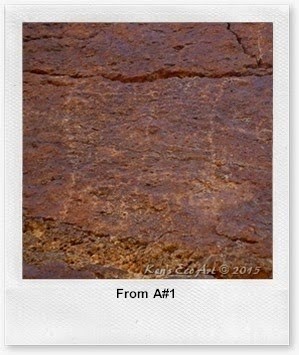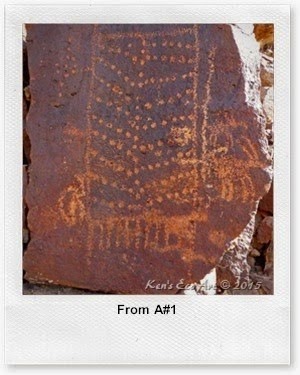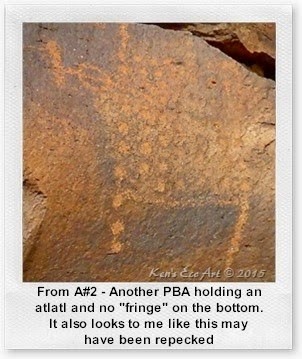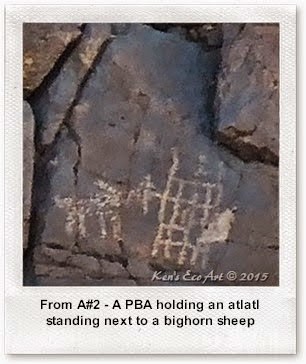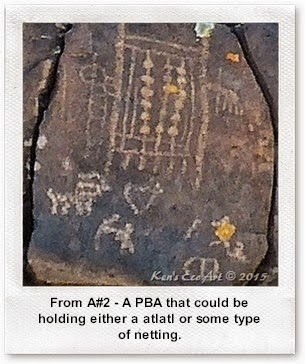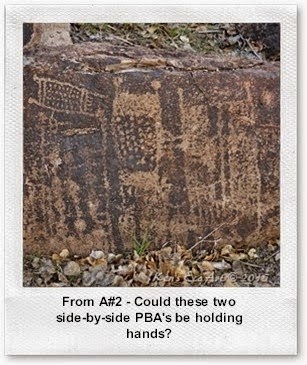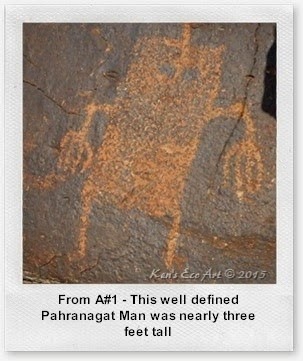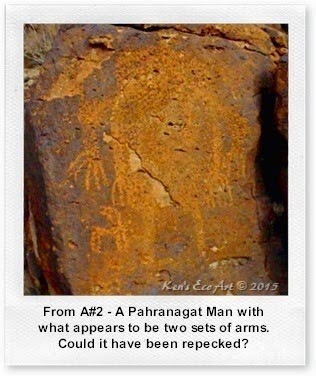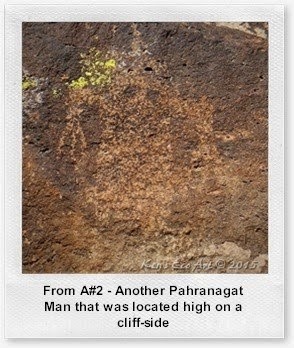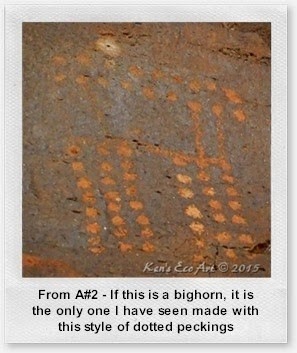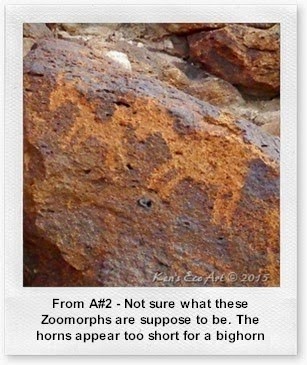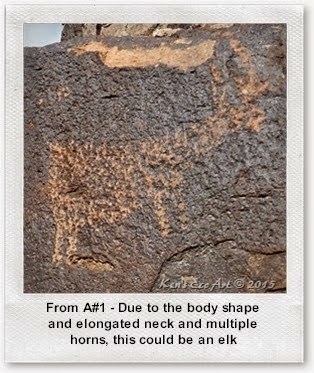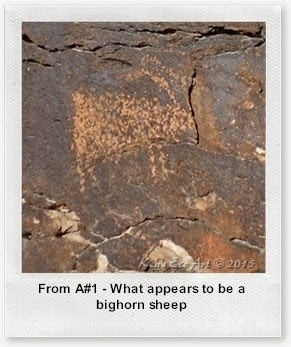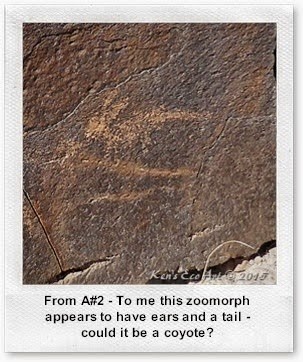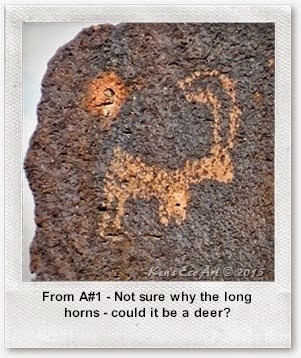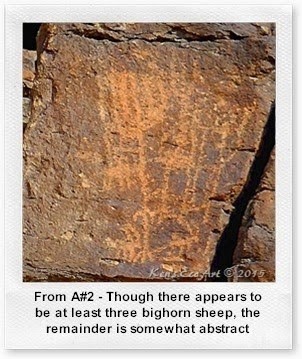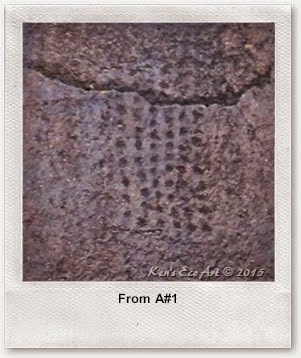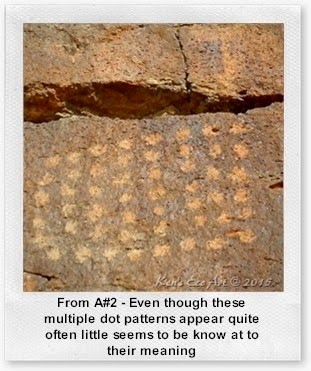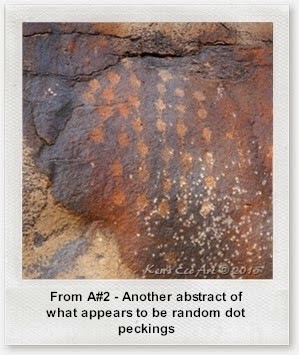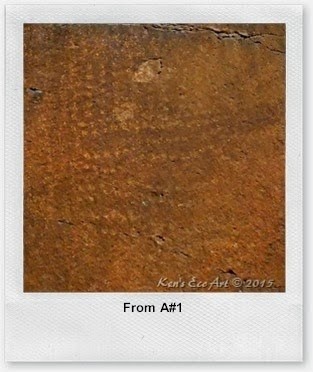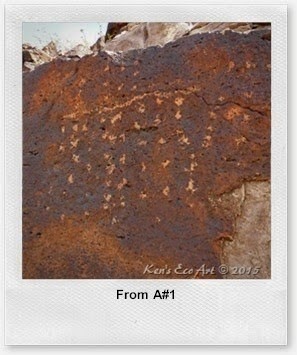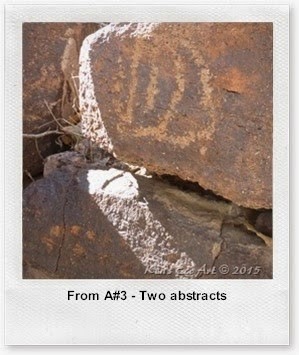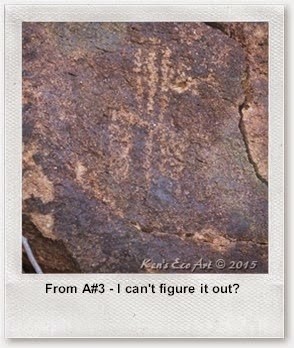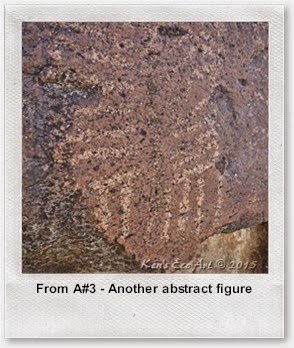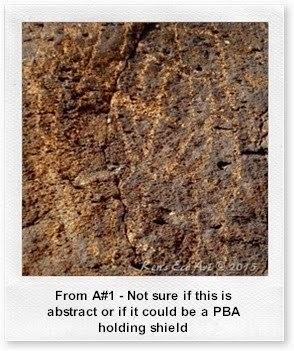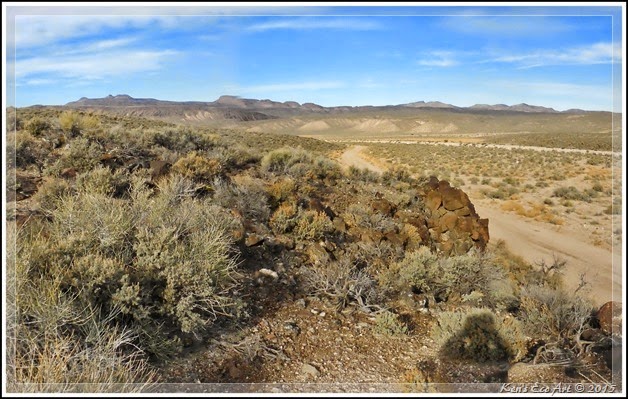 |
| (Fig. 01) |
|
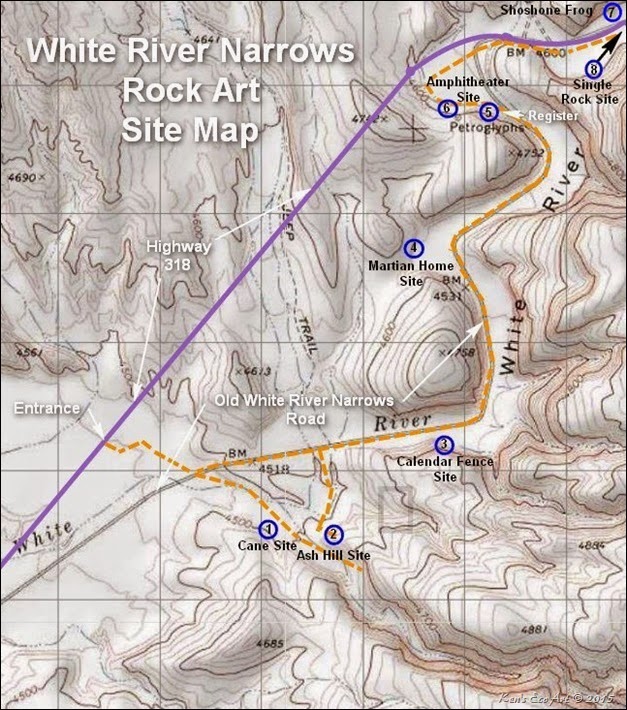 |
| (Fig. 02) |
|
| Directions: White Rivers Narrows is located by SR 318, about 150 miles north of Las Vegas. It is 23.0 miles from the intersection of State Route 375, State Route 318 and U.S. Route 93 (known as the "Y"). The entrance (a dirt road) is 4.1 miles past the "White River Narrows Archaeological District" sign and is on the right (east) side of the road. After going through the gate, it is 2.15 miles to the register at the terminus of the road. Just beyond the register is the most impressive petroglyph areas within the district, called the Amphitheater. |
|
Area Description: The White River Narrows Archeological District is located in the Weepah Spring Wilderness, a 51,480-acre wilderness area in Lincoln and Nye Counties, of Nevada. Weepah Spring Wilderness area contains Timber Mountain and lies within the Seaman Range, and is an excellent example of a Great Basin mountain range. Though it lacks a single defined ridgeline, it contains many isolated peaks, maze-like canyons, walls of fossil bearing rocks, natural arches, and volcanic hoodoos. The Wilderness also has the largest stand of ponderosa pine in eastern Nevada and encompasses one of the largest and most well-known concentrations of petroglyphs in Nevada. In addition to its 4,000 year old rock art, other prehistoric sites in the White Rivers Narrows Archaeological District include shelter caves, hunting blinds, and campsites. White River Narrows is a winding canyon that was carved by the White River during the Pleistocene or Ice Age (ca. 2.5 million to 11,700 years ago). It forms a travel corridor that was used by ancient Native American cultures. The White River Narrows Archeological District was placed on the National Register of Historic Places in 1976 and is administered by the Ely Bureau of Land Management. The White River Narrows sites collectively form a District covering some 4,000 acres in an area that is especially scenic due to its rhyolite cliffs upon which much of the District's rock art is situated. Starting from its southern entrance, there are no less than six major sites containing glyphs. As noted on the map in (Fig. 02), they have been identified as the: (1) Cane Site; (2) Ash Hill; (3) Calendar Fence; (4) Martian Home; (6) Amphitheater; (7) Shoshone Frog; and (8) Single Rock. Most are prehistoric American Indian carvings, but there are also some pioneer glyphs carved by early settlers of European descent.
|
The Cultural History: Though some of the oldest petroglyphs in the Great Basin are more then 8,000 years old, some of petroglyphs found in the White River Narrows have been estimated to be 4,000 years old. As with many other locations throughout the region, natural weathering processes, such as wind and rain, are slowly eroding these ancient markings. Many of the petroglyphs found here provide glimpses into the cultural lives of Native American peoples, hunters and foragers, who lived by harvesting wild plants and animals from some 4,000 years ago up to the early nineteenth century. Until the coming of Euro American settlers in the nineteenth century, hunter-gatherer cultures settled eastern Nevada. Hunters and gatherers skillfully harvested the wild resources of the arid Great Basin. Their deep environmental knowledge and efficient technology allowed them to prosper in the region for thousands of years. Hunter-gatherer groups lived in small, mobile family groups and moved across the landscape to gather seasonally available plants, animals, and other resources. Their cultural knowledge was expressed through song, myth, and rock art. Though the exact meanings of the Narrows’ rock art may never be known, they mark the Narrows as a place important to those who made and used these galleries of ancient art, and continue today to be important to Native American peoples living in the region.
General Description of the White River Narrows Rock Art: Two main rock art styles are found here; one generally associated with hunter-gatherers (Basin and Range tradition) and one with Fremont groups. Basin and Range tradition rock art is distinguished by finely made abstract designs such as circles, spirals, rectangles, and wavy lines. These were often combined to make complex images and compositions that are very ambiguous and evocative. In this tradition of rock art, artists depicted people as stick-figures. They portrayed a wide range of animal species, most commonly bighorn sheep, but also deer, coyotes, lizards, mountain lions, and birds. Fremont rock art is famous for its stylized portrayals of people, sometimes depicted wearing jewelry like necklaces and earrings.
|
02/05/2015 Trip Notes: Entering the narrows from its south entrance, lower left of (Fig. 02), we drove to each of the numbered sites in the order of their numbering on the map. Unfortunately, there was a posting noting that no vehicular traffic was allowed beyond the metal register, location (05) on the map in (Fig. 02). As a result we were never able to reach locations (7) and (8). Descriptions and pictures of the petroglyphs for sites (1) through (6) are listed below. The general distribution pattern of rock art found at White River Narrows seems to indicate that each of the locations where the rock art was made may have have had specific cultural meaning. Certain themes and groupings of designs distinguish each site, suggesting that different places were thought to be more appropriate for certain kinds of rock art images. Though it is impossible to know the reasoning of the authors who created this rock art, understanding why particular sets of designs were made at specific places in a landscape often underpins research into rock art meaning.
|
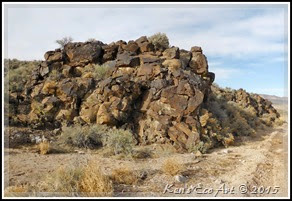 |
| (Fig. 03) |
(1) Cane Site: This site is located on a basalt outcrop (Fig. 03) along the side of a dirt road that runs south of the main road. Though there are a couple of zoomorphs, the majority of the rock art here is mostly abstract designs in Basin and Range tradition style. Curvilinear design types such as circles, wavy lines, and complex meanders predominate the boulders here (Figs. 04 & 05). The few representational images are limited to bighorn sheep figures (Figs. 06 & 07). Higher up on the mound there is an unusual figure that has lines extending from its head and trailing lines extending from its arms and hands (Fig. 08). Though at first glance we thought it might be a large spider, others have noted that this could be the portrayal of an animal or an unusual artistic treatment of a person. Overall, this site exemplifies the wide variation in design types that Basin and Range tradition style rock art takes. Climbing to the top of this outcrop we were awarded with nice views of the area. The view in (Fig. 01 above) is looking to the northwest, back towards the highway and the entrance. The view in (Fig. 09) is looking east towards Site 2, approximately 500 feet away.
|
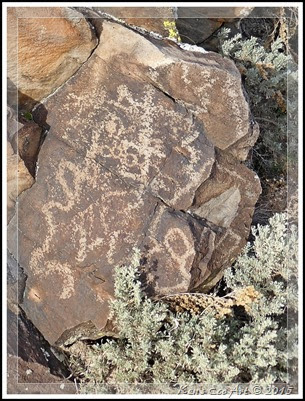 |
| (Fig. 04) |
|
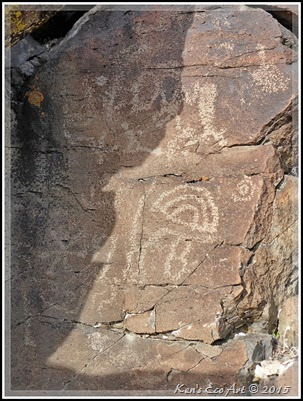 |
| (Fig. 05) |
|
|
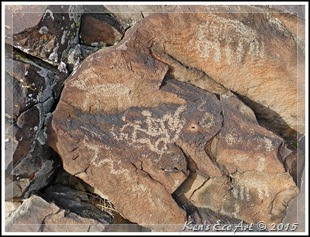 |
| (Fig. 06) |
|
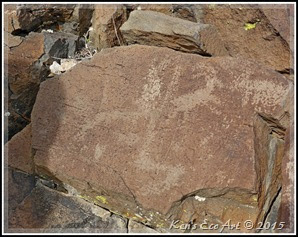 |
| (Fig. 07) |
|
|
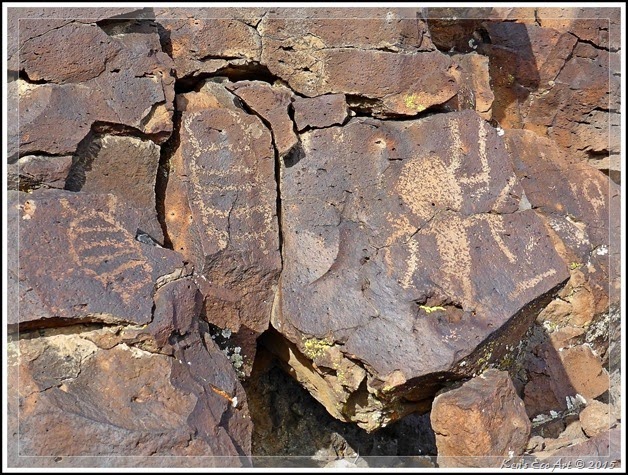 |
| (Fig. 08) |
|
 |
| (Fig. 09) |
|
|
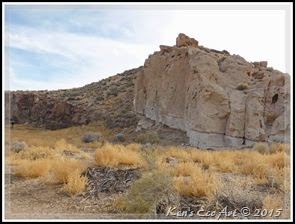 |
| (Fig. 10) |
(2) Ash Hill Site: The Ash Hill Site is on the south side of a small hill, on a basalt cliff and talus (a slope of rock debris and small boulders) (Fig. 10). Even though there were suppose to be quite a few petroglyphs located on the vertical rock faces here, we were unable to find any. Though I did find what I though might be some, they appeared to be quite worn and hard to distinguish due to the lighting. We finally gave up and headed on to the next site. |
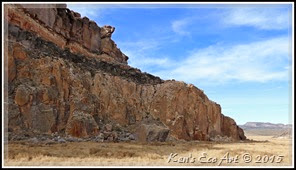 |
| (Fig. 11) |
(3) Calendar Fence Site: At this location there was a very long, and high, cliff line on the south side of the canyon (Fig. 11). Amazing as it seems, the entire length of this cliff contained on one isolated petroglyph panel on a large tuff boulder. It was positioned about in the middle of the picture in (Fig. 11). Probably one of the most prominent figures at the site, it is a finely made, long rake-like design that runs for several feet horizontally along the width of the boulder (Fig. 12). Two other small figures can be seen just below the rake: a serpentine line and a vertical line. This rock art has been suggested by some to be an example of hunting-magic, as they believe it portrays a game drive fence. It is located in an area that could have lent itself to game drives. Its narrowed entries could have been blocked using temporary fencing made of brush, directing game animals to hidden hunters. But, there is no reason why cultural practices (like rock art) intended to ensure hunting success would have been done only at hunting locales. Alternatively, it has been observed that during the summer solstice a shadow falls on the center of the rake-like design. This has suggested to some a planned solar interaction. It is not possible to prove if this apparent solar interaction is a chance correlation or one intended by the rock art’s makers. Figure 13 is a view looking west from this location.
|
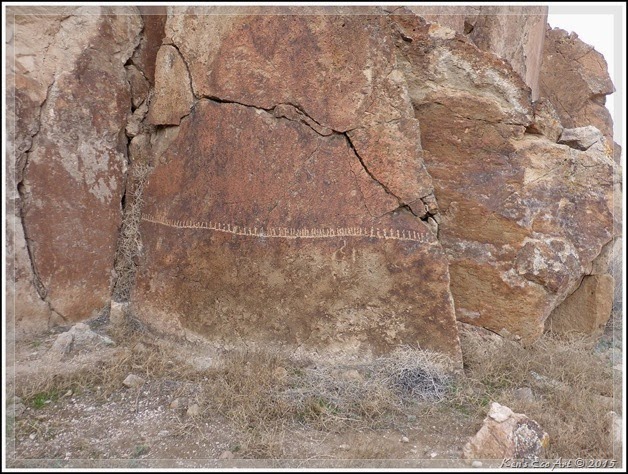 |
| (Fig. 12) |
|
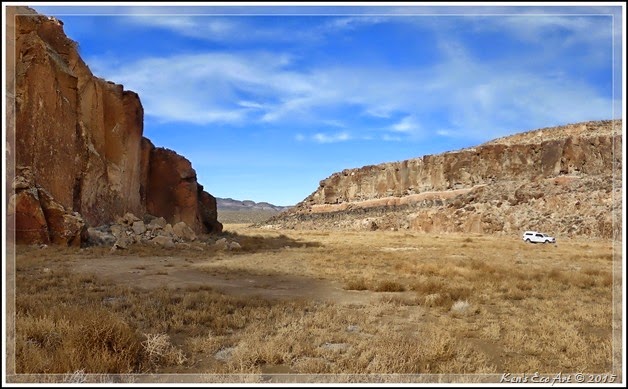 |
| (Fig. 13) |
|
(4) Martian Home Site: Again, as with site number two, we were unable to find the petroglyphs that were suppose to be at this location. There were suppose to be four petroglyph panels on a cliff on the west side of the canyon. Three panels are at the foot of the cliff, near the north end, and one is located at the top of the cliff. The site supposedly contains well-known Basin and Range tradition design types, such as a human hand-print, sunbursts (circles with short lines radiating around their disks), wavy lines, and concentric circles. Most notable are curvilinear abstract designs that are unique to this locality. These are circles and ovals that have lines inside, with curved or slanted lines extending from their tops, resembling “horns” more normally seen on anthropomorphic (human) figures. The emphasis on these enigmatic, internally decorated circles and ovals illustrates that certain designs were only made at particular places. Even though we were positive we were in the right area, we never did spot any glyphs. Perhaps I will have better luck on a future visit.
|
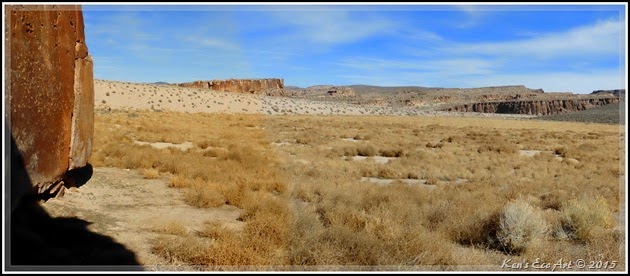 |
| (Fig. 14) |
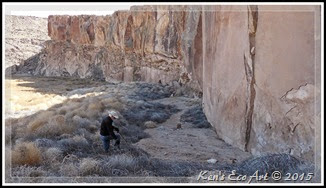 |
| (Fig. 15) |
(6) Amphitheater Site: The final site we visited was located on the west side of the canyon, at a wide bend in the old river channel (Fig. 14 & 15). It contains, by far, the largest concentration of rock art in this district. It is also prominent because of the scale and density of its designs. Here, almost all of the rock art is at the foot of a tuff cliff that is, in places, soft and friable, and low to the ground. Some designs were incised rather than pecked, a generally uncommon way of making rock art in the region. The fact that old SR 38 runs by the site probably explains the quantity of graffiti initials that have been placed here. For the purposes of the pictures below, I Photo shopped out any visible graffiti. The many abstract designs found here are representative of Basin and Range tradition types. Several rake-like figures are notable for their length, extending nearly 14 feet or more (Fig. 16). Animal designs include bighorn sheep (Fig. 19), bear paw prints, and possibly a lizard (Fig. 17). Anthropomorphs (human figures) include stick-figure types and a number of unique portrayals that apparently highlight gender (Fig. 21). Fremont-style anthropomorphs include two figures that have short, curved lines extending from their heads. Both have traces of red pigment in-filling them, a rare feature that suggests that some petroglyphs may also have been painted. I may be crazy, but the section of rock that I captured in (Fig. 22) appears to me to be someone’s attempt to carve a head into the bottom of the cliff. |
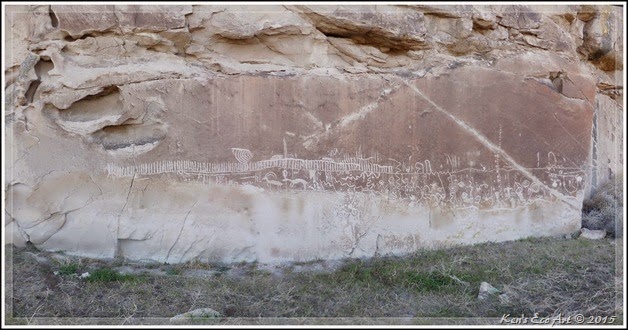 |
| (Fig. 16) |
|
 |
| (Fig. 17) |
|
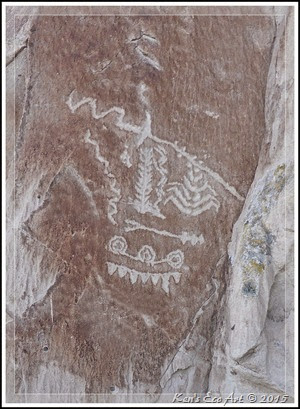 |
| (Fig. 18) |
|
|
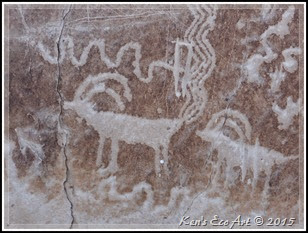 |
| (Fig. 19) |
|
 |
| (Fig. 20) |
|
|
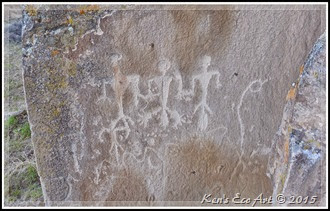 |
| (Fig. 21) |
|
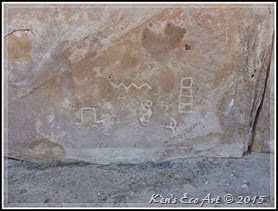 |
| (Fig. 22) |
|
|
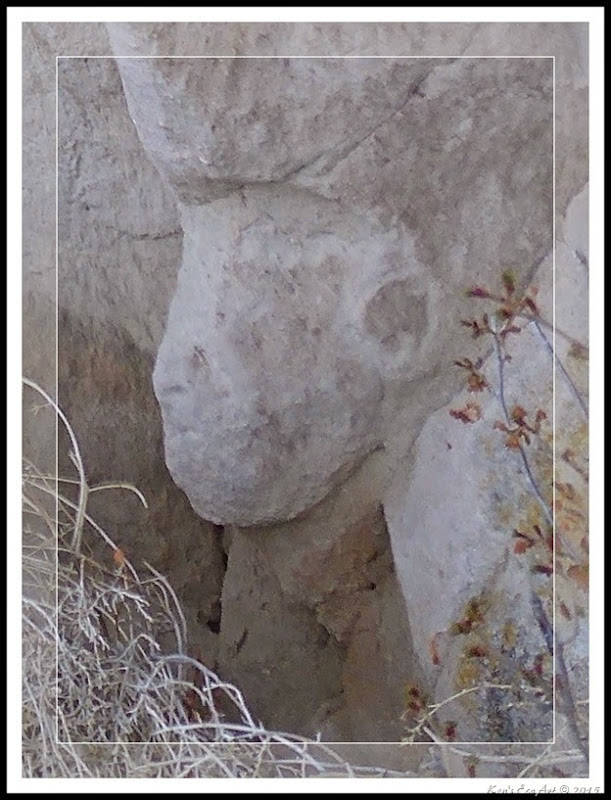 |
| (Fig. 23) |
|
 |
| (Fig. 24) |
As note previously, we were unable to locate the Shoshone Frog (#7) or the Single Rock (#8) sites, or to what is labeled the Northern Most Site (#9). After going back to the highway, we drove to the north end of the narrows looking for these sites but were unable to locate them. The northern site (#9) is notable for the sheer quantity of densely clustered rock art images, with many younger designs placed on top of older ones. The wide range of imagery portrayed at this site is particularly striking. Abstract designs include long lines that extend for several meters, complex meanders, outlined crosses, rakes, spirals, and circles. Representational figures include a large number of bighorn sheep (arranged in groups, as if portraying herds), lizards, stick-figure anthropomorphs (human figure), and footprints. These designs are local interpretations of Basin and Range tradition rock art. Possible Fremont-style anthropomorphs are represented by a few figures that have short curved lines extending from their heads. One rectangular design is decorated with vertical lines. This appears to be a Pahranagat-style patterned body anthropomorph (PBA), which is distinctive to Lincoln County and is concentrated in the Pahranagat Valley area to the south. White River Narrows marks the northernmost known extent of this regional rock art style. Maybe we can spend more time looking for these sites on a future visit.
_________
Reference Materials:
Manuscript written by Kenneth C. Clarke
|
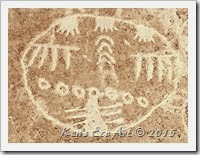 This past week Harvey Smith and I hiked the Pahranagat Wash and Upper Arrow Canyon which runs along the north eastern edge of the Arrow Canyon Wilderness Area, on the northern end of the Arrow Range. This area is about 66 miles from Las Vegas on NV-168 off Interstate-15 and the Glendale/Moapa exit. This large wash, just north of the Arrow Canyon Dam is the location of some very interesting and unusual petroglyphs, most of which are on rock walls that lack patina, which is unusual. Click here for pictures and information on this site … Pahranagat Wash & Upper Arrow Canyon.
This past week Harvey Smith and I hiked the Pahranagat Wash and Upper Arrow Canyon which runs along the north eastern edge of the Arrow Canyon Wilderness Area, on the northern end of the Arrow Range. This area is about 66 miles from Las Vegas on NV-168 off Interstate-15 and the Glendale/Moapa exit. This large wash, just north of the Arrow Canyon Dam is the location of some very interesting and unusual petroglyphs, most of which are on rock walls that lack patina, which is unusual. Click here for pictures and information on this site … Pahranagat Wash & Upper Arrow Canyon.  Last week (2/12) I made what was my third visit to the Black Canyon Rock Art Site inside the Pahranagat National Wildlife Refuge. Because this is such a valuable historic site, I made an attempt to gather and display more information on its history. As I now had a pretty good collection of petroglyph pictures from this site, I also decided to arrange and group them into four basic categories; Pahranagat Patterned Body Anthropomorphs (PBA), Pahranagat Man, Zoomorphs, and Abstract, so that they could be more easily be viewed, studied and compared. Click here to view this page … Black Canyon Petroglyphs in the Pahranagat National Wildlife Refuge
Last week (2/12) I made what was my third visit to the Black Canyon Rock Art Site inside the Pahranagat National Wildlife Refuge. Because this is such a valuable historic site, I made an attempt to gather and display more information on its history. As I now had a pretty good collection of petroglyph pictures from this site, I also decided to arrange and group them into four basic categories; Pahranagat Patterned Body Anthropomorphs (PBA), Pahranagat Man, Zoomorphs, and Abstract, so that they could be more easily be viewed, studied and compared. Click here to view this page … Black Canyon Petroglyphs in the Pahranagat National Wildlife Refuge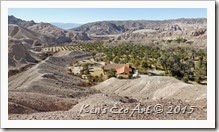 This past week, Harvey Smith, Bob Croke and Blake Smith and I decided to go hiking at the China Ranch Date Farm, located south of Tecopa California, about 80 miles from Vegas. It was a beautiful day for hiking, in the mid 70’s with a nice breeze. Besides some excellent hiking, the ‘badland’s’ like topography provided some unique vistas. The hot, out of the oven, date nut bread that they bake all day long is worth the trip in and of itself. Click here for pictures and descriptions of the day’s hikes … China Ranch Date Farm.
This past week, Harvey Smith, Bob Croke and Blake Smith and I decided to go hiking at the China Ranch Date Farm, located south of Tecopa California, about 80 miles from Vegas. It was a beautiful day for hiking, in the mid 70’s with a nice breeze. Besides some excellent hiking, the ‘badland’s’ like topography provided some unique vistas. The hot, out of the oven, date nut bread that they bake all day long is worth the trip in and of itself. Click here for pictures and descriptions of the day’s hikes … China Ranch Date Farm. 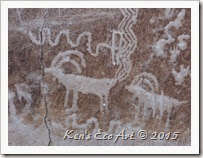 This past week, Harvey Smith, Blake Smith and I took a trip about 150 miles north of Las Vegas, up to the White River Narrows Archaeological District for some more petroglyph viewing. This was the last of the six primary petroglyph sites in Lincoln County that remained on our to-do list. You can find pictures and information on the other five sites by going to the Index For Category - Petroglyphs & Pictographs by selecting the Photos By Subject tab on my site. Click the link below for pictures and information on this past week’s hike … Daytrip - White River Narrows Archaeological District.
This past week, Harvey Smith, Blake Smith and I took a trip about 150 miles north of Las Vegas, up to the White River Narrows Archaeological District for some more petroglyph viewing. This was the last of the six primary petroglyph sites in Lincoln County that remained on our to-do list. You can find pictures and information on the other five sites by going to the Index For Category - Petroglyphs & Pictographs by selecting the Photos By Subject tab on my site. Click the link below for pictures and information on this past week’s hike … Daytrip - White River Narrows Archaeological District.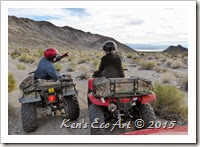 Last week Harvey Smith, Bob Croke and I spent the day 4 wheeling around Eldorado Valley and the Lake Mead Recreational Area. It is amazing how many 4WD roads there are in this area. In fact, after nearly seven hours of driving across desert bajadas, up and down washes and through and around the mountains, we got somewhat lost on our return. It ended up taking us more than an hour to find where we had left the truck. Click the following link for pictures and a description of this daytrip … Eldorado Valley.
Last week Harvey Smith, Bob Croke and I spent the day 4 wheeling around Eldorado Valley and the Lake Mead Recreational Area. It is amazing how many 4WD roads there are in this area. In fact, after nearly seven hours of driving across desert bajadas, up and down washes and through and around the mountains, we got somewhat lost on our return. It ended up taking us more than an hour to find where we had left the truck. Click the following link for pictures and a description of this daytrip … Eldorado Valley.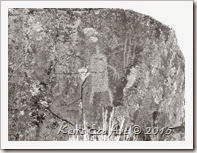 Last week Harvey Smith, Robert Croke and I drove up highway 93 to the Mt. Irish Archaeological Rock Art Site. It is about 110 miles north of Las Vegas, north of Alamo, NV. Because this location actually contains four sites full of petroglyphs, I ended up with more than 150 photos. As a result it has taken me several days cull them and put together all of the pages needed to properly describe this area. This link takes you to a summary page with links to four more additional pages ...Mt. Irish Archaeological District. The additional links provided below are for each of the pages for the individual sites within the district.
Last week Harvey Smith, Robert Croke and I drove up highway 93 to the Mt. Irish Archaeological Rock Art Site. It is about 110 miles north of Las Vegas, north of Alamo, NV. Because this location actually contains four sites full of petroglyphs, I ended up with more than 150 photos. As a result it has taken me several days cull them and put together all of the pages needed to properly describe this area. This link takes you to a summary page with links to four more additional pages ...Mt. Irish Archaeological District. The additional links provided below are for each of the pages for the individual sites within the district.




























